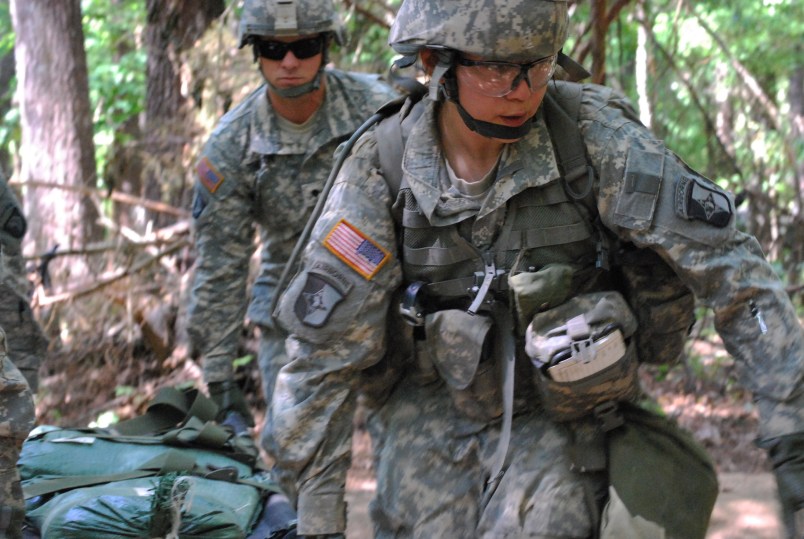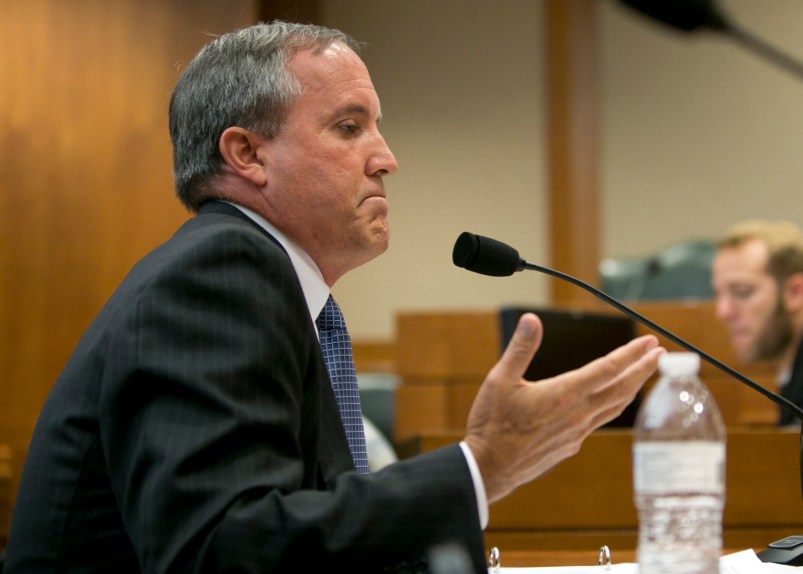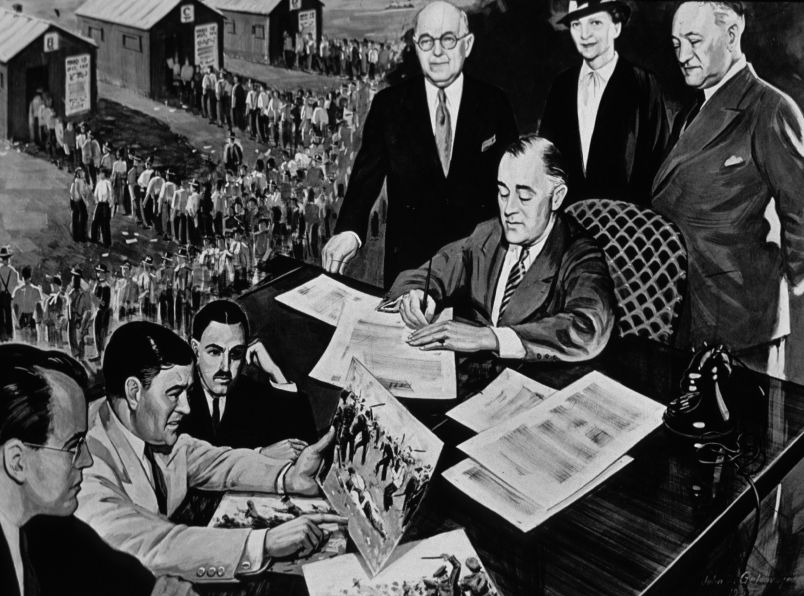A long time ago, Harry Truman successfully desegregated the Armed Forces. And recently we lifted the Don’t Ask, Don’t Tell ban on gays and lesbians in the military to a collective yawn. Now is the time to finally let women do any job in the military. This means giving women the right to compete for any job in the Armed Services, and it’s a benchmark for progress that Defense Secretary nominee Ash Carter clearly endorsed in his confirmation hearing this week.
“I’m certainly committed to gender neutral standards,” said Carter. “I strongly incline towards opening [military positions] all to women.”
Carter deserves support for taking a bold stand on making the military that protects the Land of the Free and the Home of the Brave a reflection of the values it fights for. In clearly affirming the basic American virtues of equal opportunity and fairness, Carter showed that he is ready to lead America’s military.
Opening all military positions to women will make America more secure. Here’s why: Only a quarter of Americans between the ages of 17 and 24 are actually fit for military service. Whether it’s a lack of education or physical fitness, the vast majority of those who could wear our uniform now don’t meet the basic requirements. It does not make any sense to add an arbitrary criteria—gender—to prevent those who would normally meet the standards from serving where they are able.
And that’s all we are talking about. We’re not suggesting quotas for women in combat positions. This is not a gender symposium about feminism. This is about making sure the United States of America has access to the best talent available, no exceptions. We need our best we’re they’re needed most—including women. Got a problem with that? Get over it.
One of the unexpected benefits of our military’s experience over the last decade-plus is that we’ve seen that women can handle themselves in combat. In the fighting in Iraq and Afghanistan, we have sent more than 280,000 female troops into war zones and direct combat operation. Some of us were those women. Some of us served with them. This is a settled issue for anyone who saw them in action.
It’s also a settled issue for many in leadership. In one of his last acts as Secretary of Defense, Leon Panetta lifted the official ban on women serving in combat roles. This is already happening for some positions, but the new policy gives the services—the Army, Air Force, Marine Corps, Navy, and Coast Guard—until January 1, 2016 to request loopholes for certain units and jobs. Until then, 237,000 military jobs remain officially closed to women just because of their sex.
The politics shouldn’t matter in matters of right and wrong or national security, but they are clearly in favor of full inclusion for women. Fully three in four Americans support allowing women to serve in combat roles, and elected officials such as Rep. Tammy Duckworth and Sen. John McCain—both decorated veterans—seem impatient with obstacles being put in the way of women who want to serve their country.
“There really should not be any debate over women in combat,” said McCain.
“It’s already a matter of a record that we say, of course, blacks and whites can serve together in integrated units without problems, or that Japanese-Americans can serve without problems. That was the thought in World War II, that you couldn’t integrate the military,” noted Duckworth. “So I think down the road, we’re going to look back in the distance and say, boy, that was a lot of fuss over nothing.”
And yet, there is a lot of fuss. The objections that full inclusion of women could hurt unit cohesion recalls what we heard in 1948 when Harry Truman desegregated the Armed Forces. The worry that allowing women into combat units could create romantic entanglements is exactly what some falsely expected to happen before we allowed gays and lesbians to serve openly. We’ve been here before, and we’ve overcome what turned out to be specious concerns. America is bigger than small worries.
All of this is why we, the undersigned veterans, congratulate Dr. Carter for doing something at his confirmation hearing not often heard in Washington, DC: speaking clearly and with common sense. A woman should be able to do any job in the military she can qualify for—no exceptions. Anything less is not the leadership that our troops deserve.
Michael Breen, U.S. Army
Kristen Kavanaugh, U.S. Marine Corps
Shawn VanDiver, U.S. Navy
Welton Chang, U.S. Army
Kristen Rouse, U.S. Army
Brian Jones, U.S. Marine Corps
Andrea Marr, U.S. Navy
Donald Martinez, U.S. Army
Jennifer Hunt, U.S. Army
Leo Cruz, U.S. Navy
Adam Tiffen, U.S. Army
The Truman National Security Project unites next-generation veteran, political, and policy leaders to develop and advance strong, smart, and principled solutions to the global challenges Americans now face. Views expressed are the authors’ and do not reflect the opinion of the U.S. Department of Defense.









